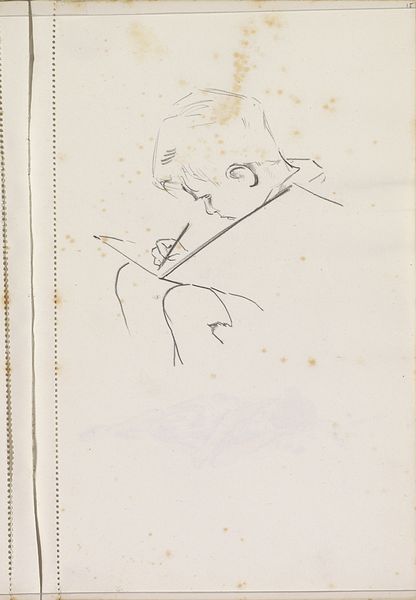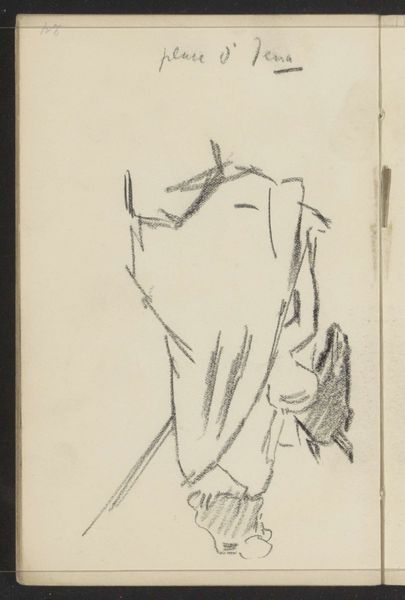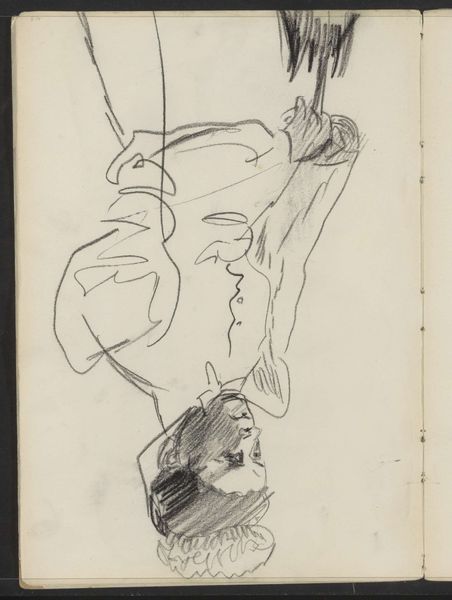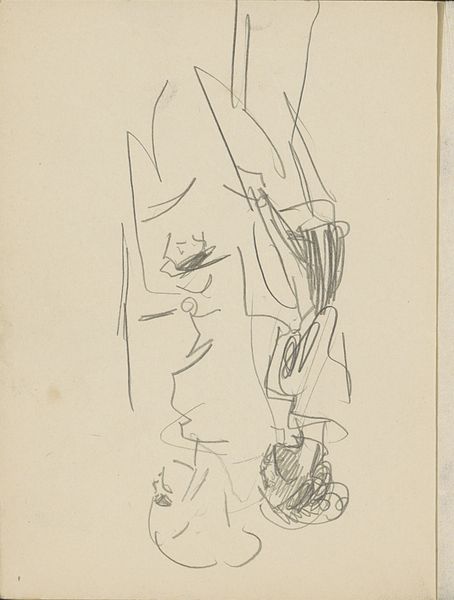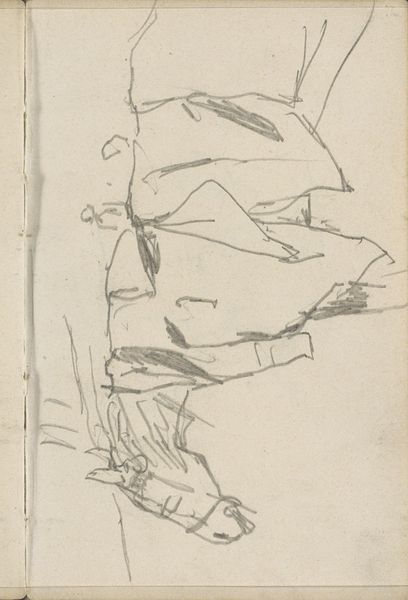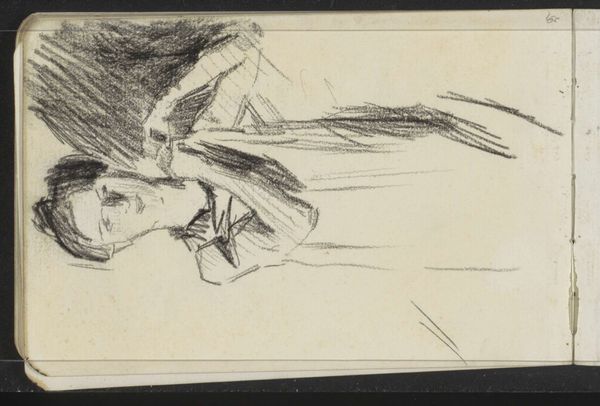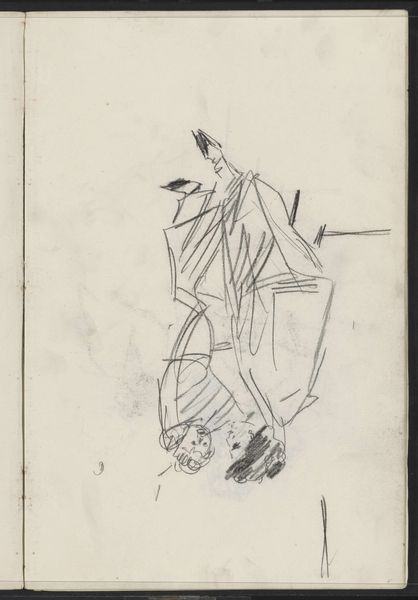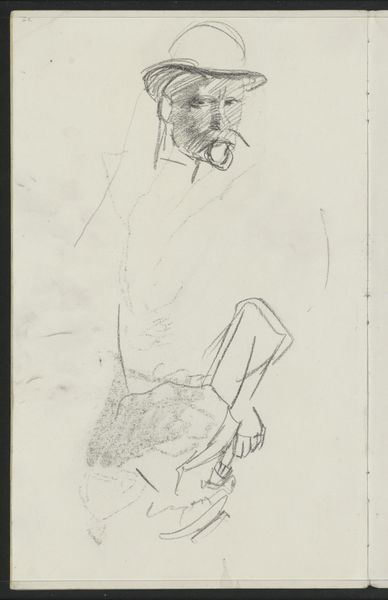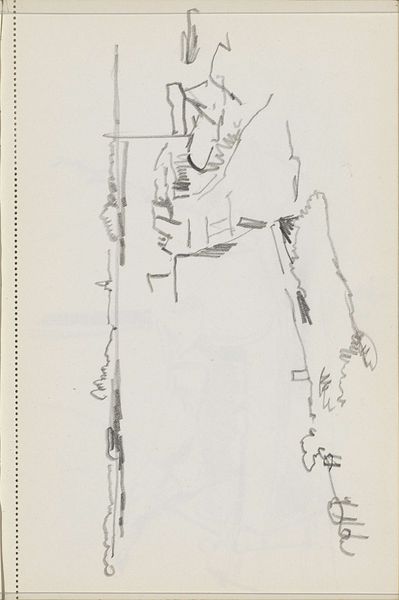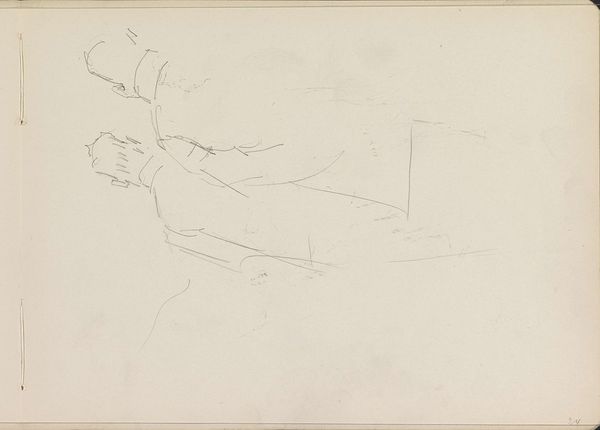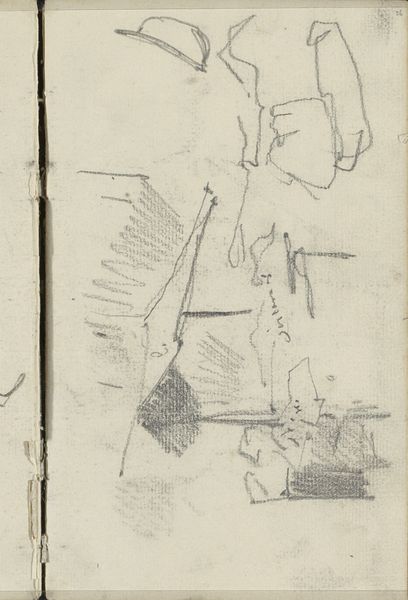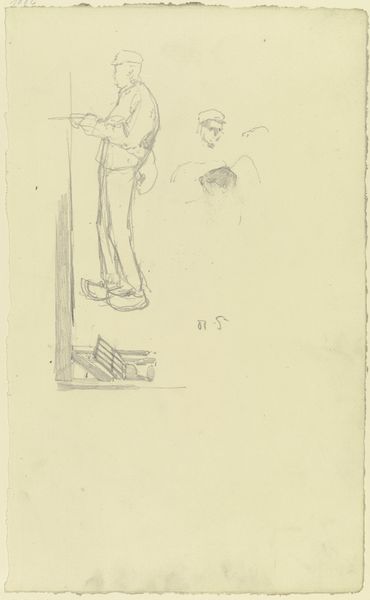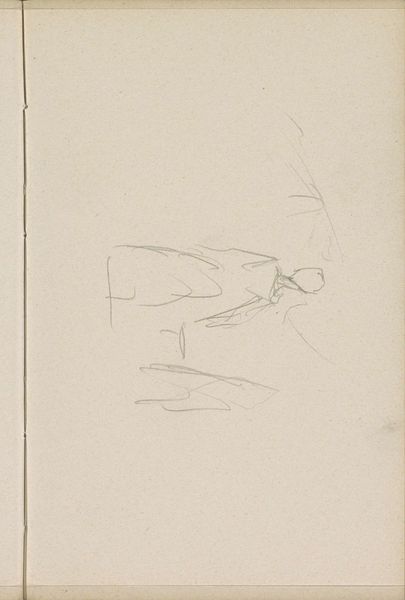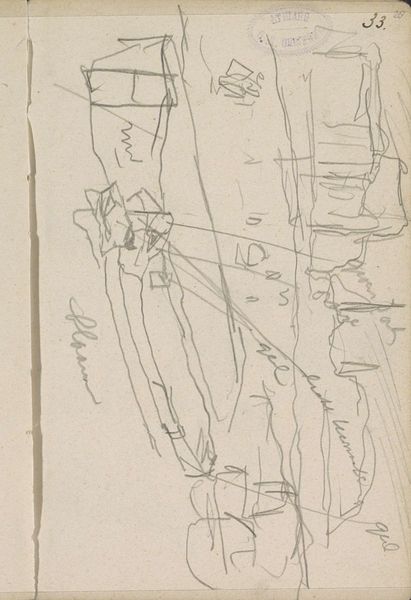
drawing, paper, pencil
#
portrait
#
drawing
#
imaginative character sketch
#
light pencil work
#
incomplete sketchy
#
figuration
#
paper
#
personal sketchbook
#
idea generation sketch
#
sketchwork
#
ink drawing experimentation
#
pencil
#
sketchbook drawing
#
sketchbook art
#
modernism
#
initial sketch
Copyright: Rijks Museum: Open Domain
Editor: We're looking at "Zittend Meisje," or "Seated Girl," a pencil drawing on paper by Otto Verhagen, dating from around 1922 to 1925. The sketch feels incredibly fragile, almost like a fleeting thought. How do you interpret this work, especially considering its historical context? Curator: What strikes me is the deliberate incompleteness, a hallmark of Modernism that often reflected a societal fragmentation and questioning of traditional representations. Consider the socio-political landscape of the 1920s. The aftermath of World War I brought immense social upheaval. How might this sketchy, unresolved quality mirror the uncertainty and shifting identities of the time, especially for women? Editor: That's interesting. So, you see the "incompleteness" as a reflection of broader societal anxieties around identity after the war? Curator: Precisely. The lack of precise detail could also be a conscious decision to resist the male gaze prevalent in earlier portraiture, offering instead a glimpse of a female figure that avoids objectification, and prioritizing interiority. What do you think about how the lack of detail relates to ideas around privacy, female autonomy, and who has the right to represent someone in what way? Editor: I see what you mean. It's like the artist is resisting definitive statements about her. It also brings up how art can represent marginalized people who are in incomplete datasets and face potential AI bias. Curator: Absolutely. Thinking about data representation in modern AI contexts raises ethical and artistic issues related to the reproduction and perpetuation of power relations. Editor: I never would have thought of all that by just looking at it! It really makes me wonder about all the other layers hidden within seemingly simple images. Curator: Indeed! This piece invites us to consider not just what is depicted, but what is deliberately omitted and how that resonates within a complex web of social and political forces.
Comments
No comments
Be the first to comment and join the conversation on the ultimate creative platform.
